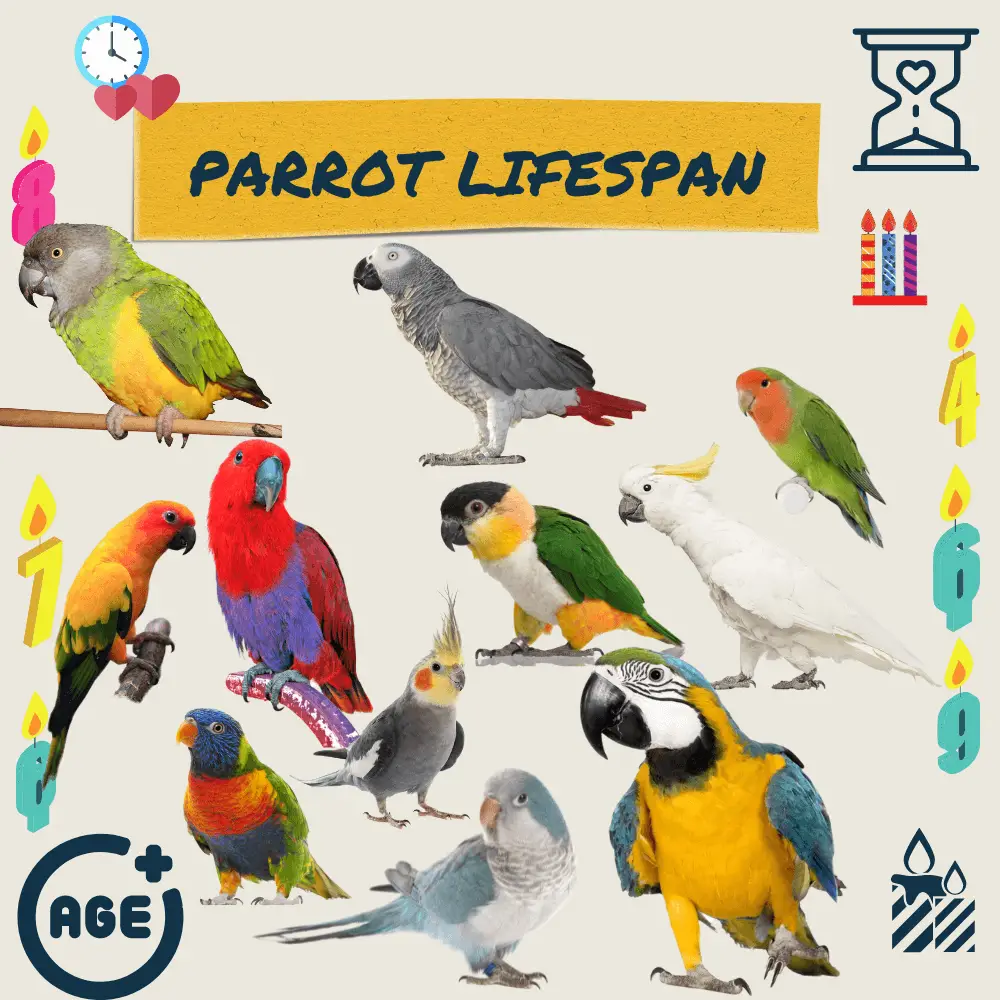Life span of a parrot: Parrots are particularly beautiful birds, renowned for their colorful feathers and the ability of some species to formulate words. Moreover, the many qualities of parrots make them very popular pets. Another of these qualities is that parrots have a very long life expectancy.
Which parrot lives the longest
Parrots are a large order of more than 350 birds, including macaws, lorikeets, lovebirds, and cockatoos. Although there is great diversity among these birds, there are also similarities. For example, all parrots have curved beaks and all are zygodactyls. This means that these birds have four toes on each foot, two pointing forward and two pointing back. A parrot diet is also common and consists of fruits, flowers, buds, nuts, seeds, and insects.
Another peculiarity shared by parrots is their very long life expectancy. In general, a parrot has a life expectancy of between 40 and 80 years, depending on the species. The kakapo or owl parrot – a species of large parrot endemic to New Zealand – is notably one of the species that can live the longest, and can even exceed 80 years. But even with a life expectancy of 40 years, we can already say that these birds live very long, in comparison with other animals. Dogs, for example, rarely survive beyond 15 years.
Why do parrots live so long?

Life span of a parrot
Note that in the animal kingdom, a longer life expectancy is generally associated with a larger size. Yet, compared to larger or comparably sized birds, parrots live much longer. But how come parrots live so long? There are several explanations for this, but the main reason relates to an evolutionary mechanism they have developed to counteract the effects of aging due to their high metabolic rate.
Since a higher metabolism tends to accelerate aging, parrots have over time developed a mechanism to manage and counteract the aging process, including reducing oxidative stress on their bodies. Along with this ability to manage the aging process, the parrot’s incredibly long lifespan is also associated with its impressive intelligence. In a recent study, it was indeed found that a longer life expectancy in different species of parrots was associated with larger brain size.
While having a larger brain is generally associated with a longer lifespan in many animal species, scientists believe there are other explanations. In particular, they suggested that relatively large brains may take longer to develop and would therefore require a longer lifespan.
The researchers said, however, that more studies are needed to support this theory. In addition, other more basic factors can also influence the life expectancy of parrots, such as their diet, their ability to fly and escape predators, or their slower reproductive rate.

